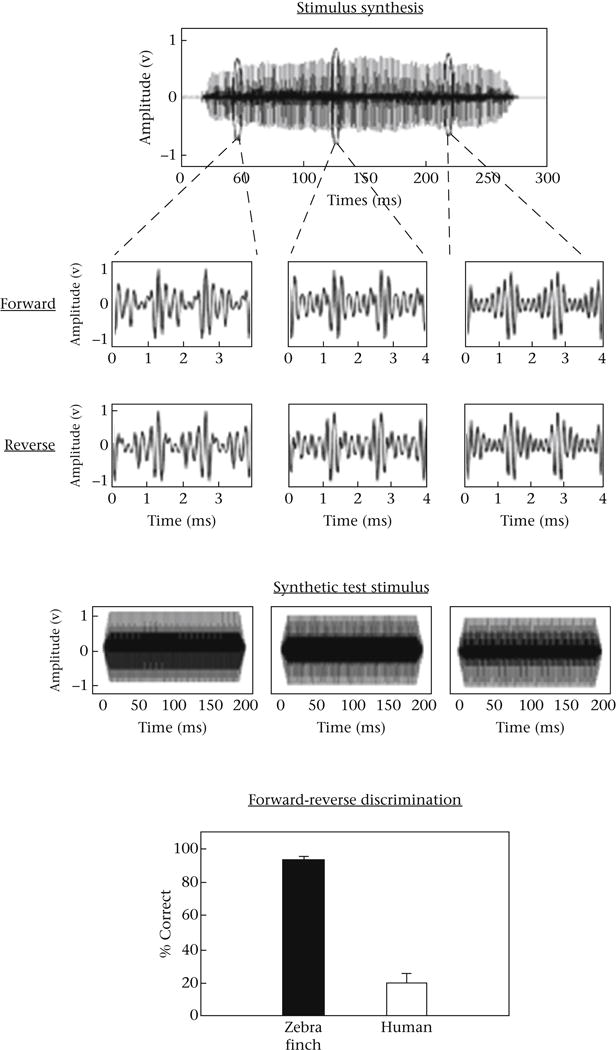Figure 4.

(a) Time waveform of a female zebra finch contact call showing regions of individual periods that were excised and concatenated to produce 200 ms synthetic calls consisting of repeated single periods of a natural call. (b) The fine structure of both forward and reversed versions of these calls is shown below each corresponding synthetic call. (c) Results for zebra finches and humans tested on forward/reversed synthetic call discrimination. Zebra finches performed at much higher levels in discriminating between forward and reversed versions of such calls compared with humans. Fundamental frequencies ranged from 690 Hz to 816 Hz corresponding to periods of 1.45 ms to 1.225 ms, respectively (from Dooling & Lohr, 2006).
